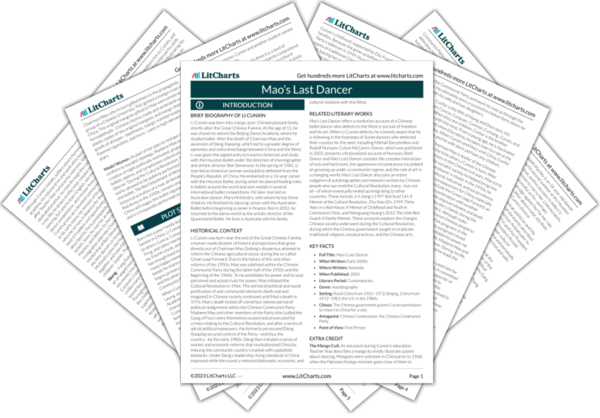Previous
Chapter 30: Another Wedding: Qingdao, 1988
|
Previous
Chapter 30: Another Wedding: Qingdao, 1988
|
Mao’s Last Dancer: Postscript Summary & Analysis |
Next
Themes
|


Upgrade to unlock the analysis and theme tracking for all of Mao’s Last DancerMao’s Last Dancer!
Get LitCharts A+